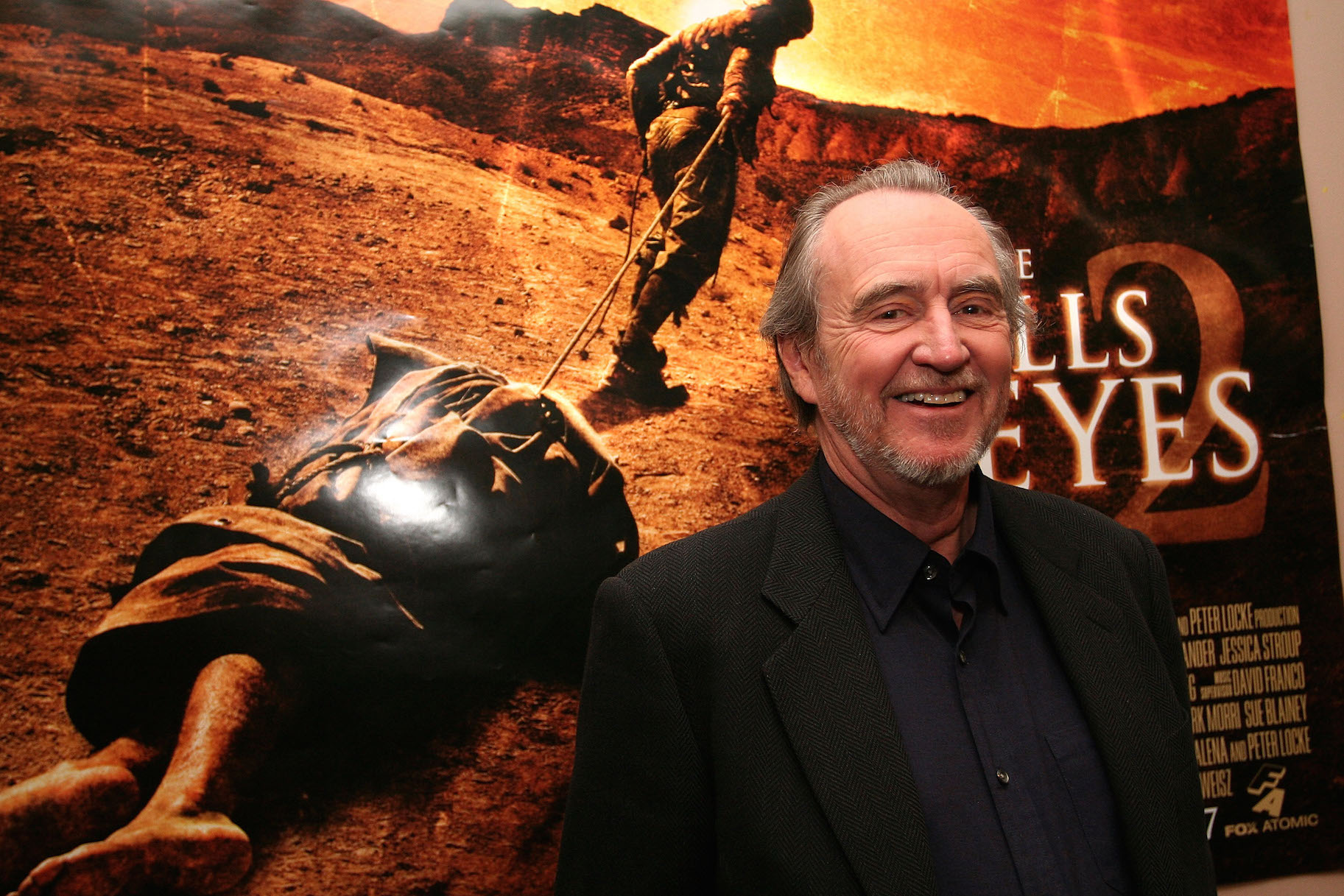Create a free profile to get unlimited access to exclusive videos, breaking news, sweepstakes, and more!
Was Wes Craven's 'The Hills Have Eyes' Based On A Real Cannibal Cult?
Wes Craven's "The Hills Have Eyes" tells the story of an inbred cannibal cult, but what's the real story behind the horror classic?

Plenty of horror movies brag that they're based on true events, but a mutant family feasting on the flesh of their victims in the barren wastelands of Nevada seems fairly far-fetched as far as horror movies go. So is the the classic '70s rape-revenge film "The Hills Have Eyes" based on real events?
Wes Craven's hyper-violent 1977 film (as well as the 2006 remake of the same name) tells the story of a family who wanders into the clutches of a deformed brood looking for food. Playing on post-Cold War and post-Vietnam Conflict anxieties pertaining to societal fallout and American culpability, Craven's nightmarish fantasy is actually a sci-fi twist on a 16th-century Scottish legend.
Craven has admitted that the idea for "The Hills Have Eyes" came after he discovered the legend of Sawney Bean, the mythical leader of a cannibalistic faction of insurgents, according to horror blog Bloody Disgusting. Debates about whether Bean actually existed continue in historian circles.
The lore of Bean was catalogued in "The Newgate Calendar: The Malefactors' Bloody Register," a collection of criminal folklore partially extrapolated from actual bulletins of executions, which became popular in the 18th and 19th century. In it, Bean is described as the child of poor laborers born in the 1500s. He eventually ended up in the company of a woman accused of witchcraft, Agnes Douglas, who reportedly led Bean to cannibalism after the duo ate a victim they had robbed and killed. Douglas and Bean raised a litter of children and grandchildren, many of whom were reportedly the result of incest. The Bean clan supposedly survived by carefully laying traps and eating their unfortunate prey in a cave that functioned as their lair.
The search for Bean, as written in the Newgate Calendar, culminated in the lynching of several unrelated individuals accused of participating in the carnivorous cult. Eventually, at the behest of King James VI of Scotland, a team rooted the Bean family out of their cave. They were executed by various devilish means: Agnes and some of her children were burned at the stake; others were hanged or drawn and quartered.
Historians have argued about the veracity of the Bean legend. A 2005 investigation by historian Sean Thomas notes that newspapers around the time the legend supposedly occurred made no notes of missing individuals. The Bean legend's resemblance to several other folkloric fictions from around the same time period have led other historians to argue the case is likely a fabrication or large embellishment.
Nonetheless, Sawney Bean's legacy merged with an apocalyptic fantasy for the reimagining of Craven's tale. Directed by Alexandre Aja, the 2006 reboot further elaborates on the mutant family's origins: In the new film, the monsters are the result of radiation caused by atomic bomb testing facilities in the area.
Indeed, Los Alamos, New Mexico (where the reboot is set) was the site of several nuclear testing facilities in reality, according to History.com. The tests were conducted in a secluded area of the desert, specifically so they would not impact the surroundings.
Although actual clans of mutants have never been discovered in areas where nuclear weapons have been deployed, negative depictions of irradiated peoples and their connection to extreme violence is explored in the book "Plutopia" by Kate Brown.
"The trope of ignorant, genetically deficient, and drunken villagers is a common one in Russia," Brown wrote. "In the Southern Urals in the past few decades the cliché has been useful in glossing over the human suffering connected to uncontrolled dumping into the Techa River. In conferences debating the number of victims of the Chernobyl accident, I heard the same charges from officials who drew paychecks from nuclear lobbies."
Ultimately, Aja's "The Hills Have Eyes" was created by fusing the legacy of two enduring mythos rooted in actual historical discourse, but we may never know how true Sawney Bean's story, which sparked the creation of the original film, actually was.
[Photo: Wes Craven by Donald Bowers / Getty Images]

























